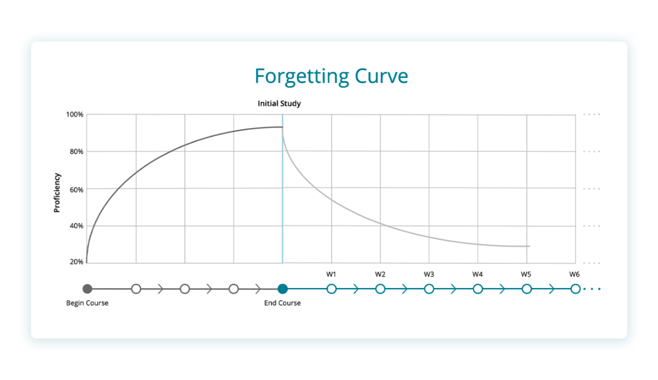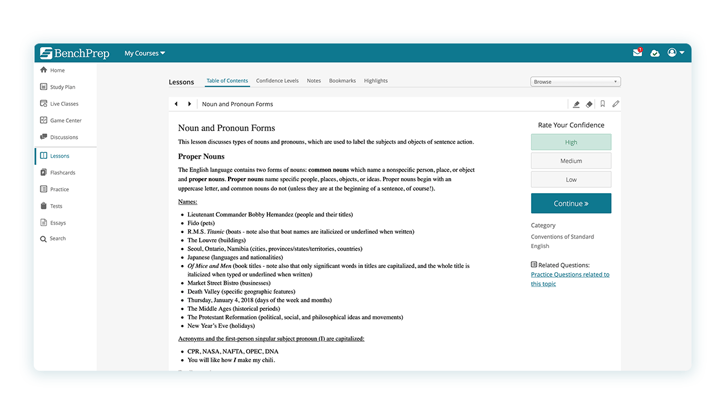5 Ways to Effectively Educate Through Microlearning
Everyone talks about the benefits of microlearning, but what do amazing microlearning modules look like?
Microlearning presents information in 2-10 minute chunks based around one learning objective. Unlike a traditional course, modules do not build on previously taught concepts. Instead, the microlearning module includes everything the learner needs to know. Ideally, interactive elements keep learners engaged, while also providing feedback.
But microlearning isn’t as simple as chopping up long content.
To be effective, microlearning needs to follow some best practices. Continue reading to learn about five research-based learning strategies you can use to ensure you’re getting the biggest bang for your buck with effective microlearning.
1. Cognitive Load
George A. Miller discovered in 1956 that the human short-term memory can only hold 5-9 pieces of information at a time. Microlearning partially addresses this issue, but 5-9 pieces of information is an incredibly small number.
How can you make it even easier for your learners?
Microlearning can reduce the cognitive load even more by removing extraneous information or deliberately arranging information into schemas. Designers can integrate information (i.e. text and visual together) so the brain can see them as one chunk. Or, they can create schemas by attaching meaning to each chunk. This video provides one example of how instructional designers can lower the cognitive load for their learners.
2. Spaced Repetition
A daily learning habit can boost knowledge retention because learners forget most of what they know within hours of learning it. Hermann Ebbinghaus dubbed it the forgetting curve.

The design fix? Spaced repetition.
Just like the name suggests, this learning strategy pushes similar material to learners over several days instead of a one-day training dump. Over time learners develop the cognitive patterns to encode that information into long-term memory. Microlearning software can send out similar questions to learners over a longer period of time to harness this learning strategy, while not affecting productivity.
3. The “Testing” Effect
Even though most of us remember hating tests in school, they do have a place in learning. Low-stakes testing, such as daily questions in microlearning modules, speeds up the memorization process. It’s called “retrieval practice.”
What would retrieval practice look like in microlearning?
Multiple choice quizzes provide one easy way to ask learners to apply their knowledge, but they aren’t the only option. Scenario-based questions can lead learners to apply their learning to real-life problems. This article gives some great examples of scenarios in microlearning.
4. Confidence-Based Learning
This learning strategy measures learner confidence, not just the learner’s ability. James Bruno found confident learners made smart decisions, while doubtful learners hesitated.

So, how can microlearning help?
If learners rate their confidence level, microlearning modules can adapt by providing them more questions on the same topic until they reach mastery. Since there’s no deadline like in a traditional course, microlearning allows learners to strive for mastery instead of a high test score. For businesses, metrics from daily microlearning modules also provide richer data than course completions. You’ll be able to pinpoint exactly where to help your learners who need support. Taking these actions helps ensure that business objectives are met.
5. Continuous Learning
Businesses have an imperative to upskill their workforce, otherwise, they’ll be left behind. In fact, West Monroe found 70% of surveyed organizations have adopted new technology, but a third of employees report never being trained on it.
Could microlearning increase digital adoption?
Microlearning can drive adoption by providing solutions for learners just-in-time. With search navigation, learners can find the exact module they need to solve their problems instead of turning to Google. Even better, you can push out timely modules to help avoid errors.
Benefits of Microlearning
Microlearning offers a new way of training. You can have an on-demand, mobile-accessible mode of delivery.
But you’ll get even bigger benefits if you combine microlearning with research-based instructional design techniques.
BenchPrep bakes many of these research-based learning strategies directly into our platform. Our LMS uses microlearning to combat the forgetting curve by sending out a short question every day. It overcomes the limitations of short-term memory by using spaced repetition and chunking to reduce your learners’ cognitive load.
Your learners will improve their day-to-day decisions because BenchPrep measures confidence and specifically builds on areas of low confidence. And, best of all, it’s available continuously so you can keep your learners learning year-round.
While many organizations are aware of the learning sciences needed to propel their programs forward, they are unsure how to turn these great ideas into digital learning that drives results. In our free eBook, "Dreaming of Recurring Revenue? Engage Learners Continuously", we explore why learners need continuous learning to achieve mastery--and what you can do about it to grow revenue and improve learning outcomes.






